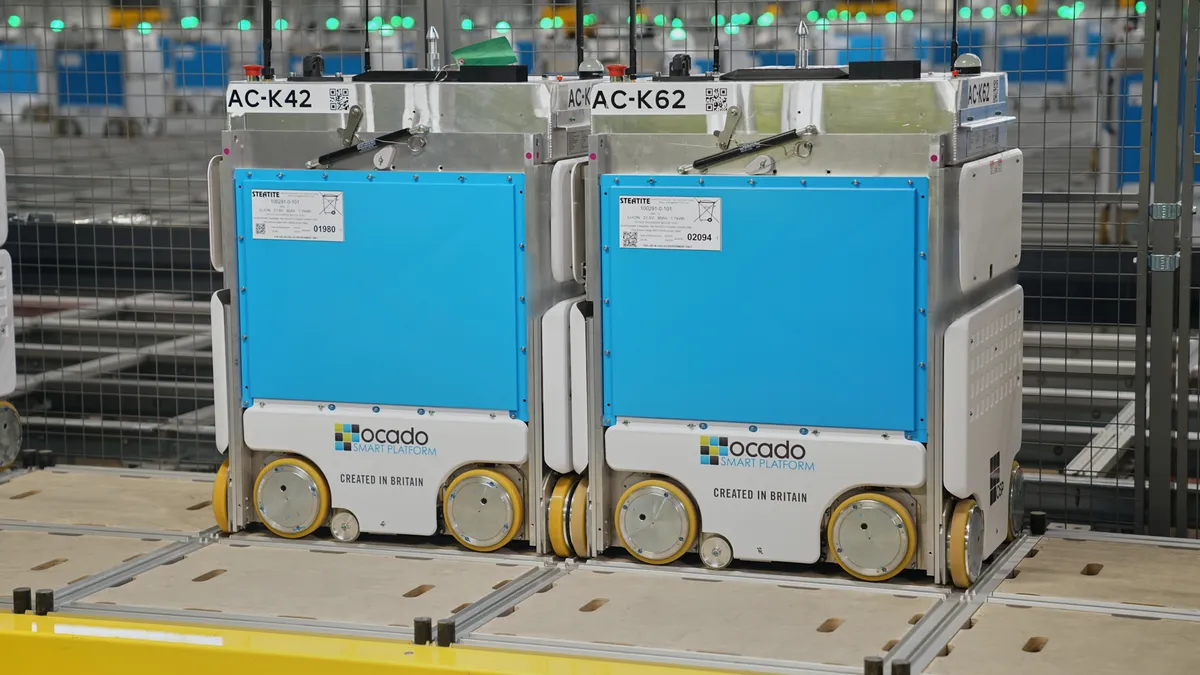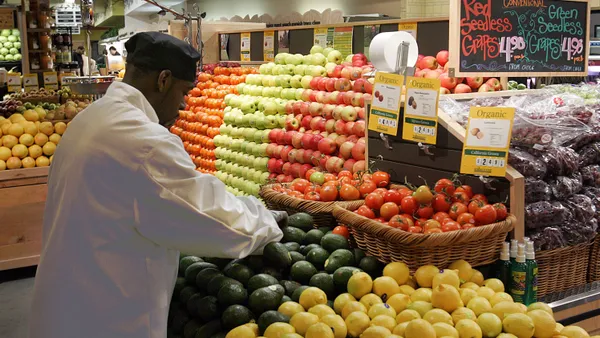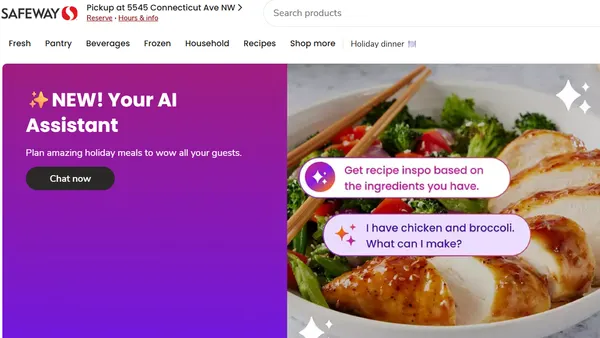Kroger is continuing to move forward with its automated grocery fulfillment project, but the company is holding off on the development of new facilities until it is confident existing sites are performing up to expectations, the grocer’s top executive said during an earnings call Friday.
Koger is making “continued great progress” on the growth in the e-commerce sheds and the base operating model” of the network, which it is building in partnership with U.K.-based robotics company Ocado, Kroger Chairman and Chief Executive Officer Rodney McMullen said during the call.
McMullen said, however, that “all the energy is focused” on the Ocado sites already in operation, which include customer fulfillment centers, called CFCs, and connected sites known as spokes.
“We're making progress, but we wouldn't be to the point where we would start focusing on additional sheds until we make sure that we have a clear path on the ones we have,” McMullen said.
Kroger announced plans to work with Ocado to build a fleet of automated order fulfillment centers in 2018, and opened its first CFC in Monroe, Ohio, in March 2021. The company has since inaugurated seven more CFCs, with the last of those opening in June in Frederick, Maryland.
The latest development in the automated fulfillment center rollout came in late July, when Kroger announced the opening of a spoke facility in Independence, Kentucky, that links with its CFC in Monroe.
Speaking during Kroger’s first quarter earnings call in June, Kroger CFO Gary Millerchip said Kroger had worked with Ocado to improve the efficiency of its CFCs and had substantially improved the cost per order at the Monroe center. Kroger was “in the process of applying these learnings across our other sites,” Millerchip said during that call.
McMullen’s disclosure on Friday that Kroger is taking a cautious approach to its automated fulfillment center rollout comes as online grocery sales have come down significantly from their highs during the peak of the COVID-19 pandemic. Grocery e-commerce sales fell 7% in July, according to survey data from Brick Meets Click and Mercatus, and sales will remain under pressure into next year as financial headwinds continue to impact consumers.
Kroger said Friday that its digital sales were up 12% year over year during the second quarter, as the company saw what McMullen described as “strong growth” in its pickup and delivery businesses, with more households using the services and traffic on the rise.
Millerchip said during the Friday earnings call that the digital growth the company achieved in Q2 — which followed double-digit increases in the metric during each of Kroger’s previous three quarters — stemmed from its in-store order-preparation operations as well as its fulfillment centers.
McMullen noted that Kroger made substantial progress with its pickup business during Q2 and has a “clear path to sustainable profitability” for that fulfillment channel. Kroger has stepped up its use of hands-free technology and rolled out automated pods and lockers, which have boosted productivity, McMullen said during the call.










